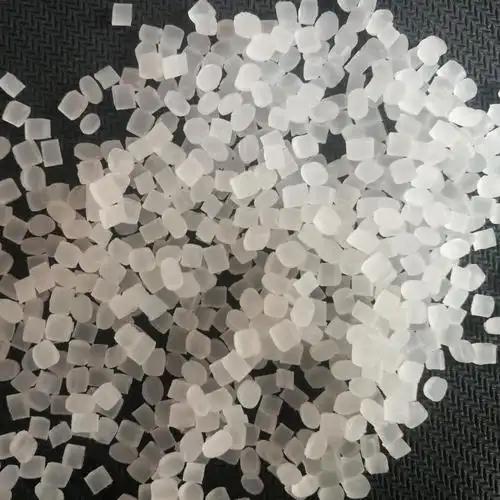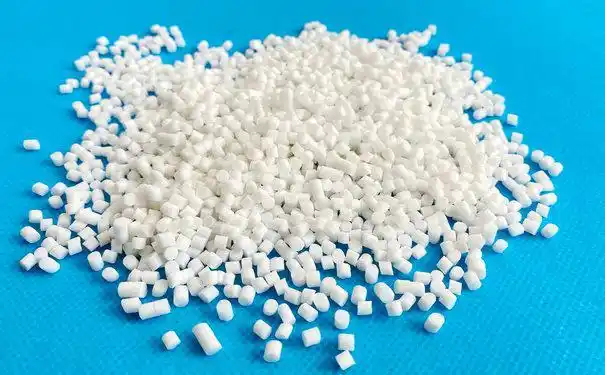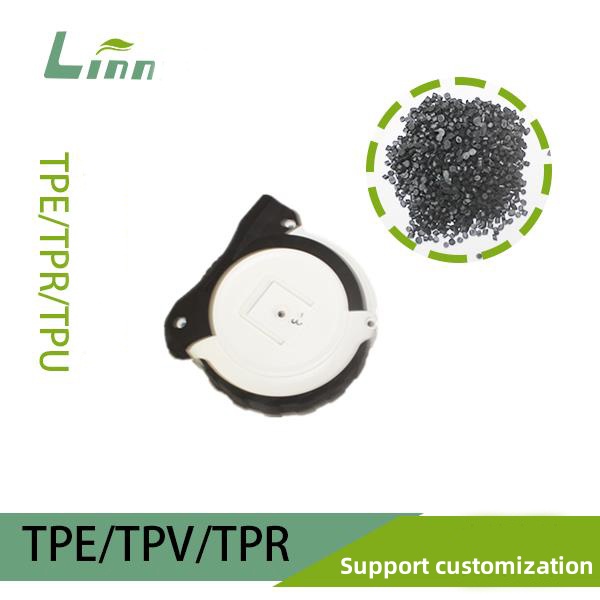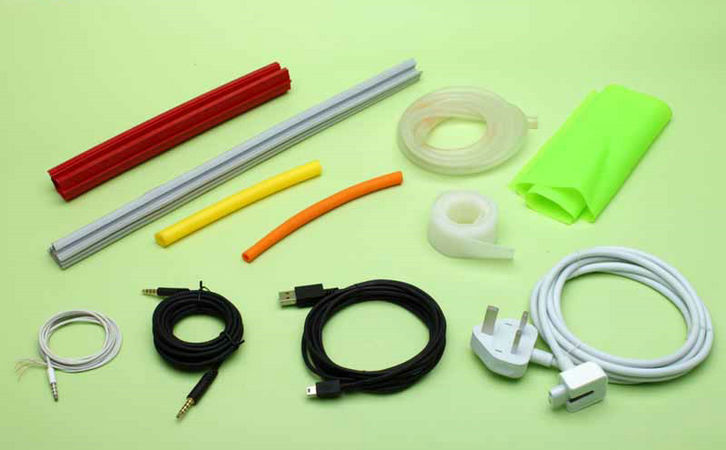As someone who’s been in the flooring and safety equipment industry for over 15 years, I’ve seen anti-slip mats evolve from basic rubber strips to advanced materials like TPE (Thermoplastic Elastomer) and PVC (Polyvinyl Chloride). Whether you’re outfitting a gym, a kitchen, a vehicle, or even a bathroom, choosing the right anti-slip mat can make all the difference in safety, comfort, and durability. The question I hear most often from clients is: “Which is better, TPE or PVC?” It’s a valid concern, especially when you’re trying to balance performance, cost, and environmental impact. Having tested both materials in real-world settings—from sweaty yoga studios to muddy truck beds—I’m here to break down the differences, share my insights, and help you decide which mat suits your needs. Let’s dive in with a clear, practical comparison.

What Are TPE and PVC Anti-Slip Mats?
Before we get into the nitty-gritty, let’s clarify what these materials are. TPE is a blend of plastic and rubber, offering a flexible, rubber-like feel with the recyclability of plastic. It’s become a go-to for eco-conscious consumers and industries needing lightweight, durable mats. PVC, on the other hand, is a synthetic plastic polymer known for its affordability and toughness. It’s been a staple in anti-slip mats for decades, especially in budget-friendly applications like gym flooring or car mats.
I’ve worked with both in various settings. For example, I once helped a gym chain switch to TPE mats for their yoga studios, while a restaurant I consulted for stuck with PVC for its kitchen floors due to cost constraints. Each material has its strengths, but the choice depends on your specific use case. Let’s explore how they stack up.
Key Factors in Comparing TPE and PVC Anti-Slip Mats
1. Anti-Slip Performance
The primary job of an anti-slip mat is to prevent slips, especially in wet or high-traffic areas. Both TPE and PVC are designed with non-slip surfaces, but their performance varies.
TPE: TPE mats excel in grip, even when wet. Their rubber-like texture, often enhanced with closed-cell foaming, provides excellent traction for sweaty hands, feet, or shoes. I’ve seen TPE yoga mats hold firm during hot yoga sessions, where sweat would make PVC mats slick. For car mats, TPE’s anti-skid backing ensures they stay put, even in snowy or muddy conditions. A client with a 2024 Toyota Tacoma praised TPE mats for their 95% traction when wet, compared to rubber’s 70%.
PVC: PVC mats offer decent grip on smooth surfaces, like gym floors or indoor tiles, thanks to their high-density construction. However, they can become slippery when heavily wet, especially in sweaty environments like hot yoga or kitchens with spills. I once saw a restaurant worker slip on a PVC mat after a grease spill—something TPE might have handled better due to its superior grip in wet conditions. PVC’s open-cell structure can also absorb oils, making it less reliable over time.
2. Durability and Longevity
Durability is a big concern, especially for commercial or heavy-use settings. You don’t want to replace mats every year.
TPE: TPE mats are highly durable and resist cracking, even in extreme temperatures. Their flexibility, derived from a blend of plastic and rubber, allows them to withstand heavy foot traffic or equipment pressure without deforming. In a Minnesota truck owner’s experience, TPE car mats lasted through three harsh winters without cracking, unlike rubber mats that failed in a year. I’ve seen TPE yoga mats maintain their shape and grip after years of daily use, thanks to their high wear resistance and UV resistance, which prevents fading.
PVC: PVC mats are also durable, particularly for indoor use. They resist scratches and wear well in moderate conditions, like home gyms or entryways. However, PVC can flake or lose resilience over time, especially in outdoor or high-heat environments. I worked with a gym where PVC mats started peeling after two years of heavy use, whereas TPE mats in a similar setting lasted closer to five years. PVC’s rigidity can also lead to cracking in cold weather, a common issue for car mats.

3. Eco-Friendliness and Safety
With growing awareness of environmental impact, many people want mats that are safe for both their health and the planet.
TPE: TPE is the clear winner here. It’s non-toxic, recyclable, and free from harmful chemicals like phthalates, BPA, or PFAS. Its production uses 70%+ recycled granules in some cases, and manufacturing consumes 82% less CO₂ than rubber mats. I’ve advised clients with kids or pets to choose TPE for home use because it’s odorless and safe for sensitive environments, like nurseries or cars with pregnant women. TPE’s closed-cell foaming also makes it resistant to bacteria, reducing mold growth.
PVC: PVC’s biggest drawback is its environmental impact. Its production releases heavy metals and toxic chemicals, and it’s non-biodegradable, taking centuries to decompose. PVC mats often contain phthalates, which can pose health risks, especially for those with allergies. I’ve had clients complain about a strong chemical odor from new PVC mats, particularly in hot weather, which can be off-putting in enclosed spaces like cars or small gyms. PVC’s open-cell structure can also harbor bacteria, making it harder to keep hygienic.
4. Comfort and Cushioning
Comfort matters, especially for mats used in prolonged standing or exercise settings.
TPE: TPE’s rubber-like elasticity provides a soft, cushioned feel that’s ideal for yoga, fitness, or standing for long periods. Its 3-5mm thickness in yoga mats offers a balance of support and portability, while thicker 8-15mm TPE mats are great for gym flooring. I’ve had clients in hospitals and kitchens rave about TPE’s anti-fatigue properties, which reduce strain during long shifts. The material’s flexibility also makes it feel comfortable underfoot in car mats.
PVC: PVC mats are generally firmer and less cushioned. While they come in various thicknesses, their rigidity can feel less comfortable for extended use. In a yoga studio I worked with, some practitioners found PVC mats too hard for poses requiring knee or elbow support. PVC’s firmness can be an advantage for heavy equipment protection, but it’s less ideal for comfort-driven applications like fitness or home use.
5. Ease of Cleaning and Maintenance
Nobody wants a mat that’s a pain to clean, especially in high-traffic or messy environments.
TPE: TPE mats are easy to clean with just water and mild soap. Their stain-resistant surface doesn’t trap dirt or odors, making them ideal for cars, gyms, or kitchens. I’ve seen TPE car mats hosed down and dried in minutes, looking brand new. Their closed-cell structure prevents water or oil absorption, reducing bacterial growth. For yoga mats, TPE’s sweat-resistant properties make post-workout cleanup a breeze.
PVC: PVC mats are also easy to clean with a mop or cloth, especially for indoor use. However, their open-cell structure can absorb oils or sweat, making them harder to clean thoroughly in greasy or sweaty environments like kitchens or hot yoga studios. I’ve had clients note that PVC mats require more scrubbing to remove stubborn stains, and they can retain odors if not dried properly.

6. Cost and Availability
Budget is often a deciding factor, and both materials cater to different price points.
TPE: TPE mats are generally more expensive due to their eco-friendly production and advanced properties. A quality TPE yoga mat might cost $30-$60, while car mats can range from $50-$150, depending on custom fit. However, their longevity and recyclability often justify the cost. I’ve seen businesses save money in the long run by investing in TPE, as they need replacing less often.
PVC: PVC mats are more affordable, making them popular for budget-conscious buyers. A PVC yoga mat can cost as little as $10-$30, and car mats are often under $50. Their low cost makes them common in commercial settings like gyms or rental properties, but the trade-off is shorter lifespan and environmental concerns.
Comparison Table: TPE vs PVC Anti-Slip Mats
Here’s a side-by-side look at how TPE and PVC compare across key factors:
|
Feature |
TPE |
PVC |
Best For |
|---|---|---|---|
|
Anti-Slip Performance |
Excellent grip, even when wet |
Good grip, but slippery when wet |
TPE for wet environments |
|
Durability |
High, resists cracking and fading |
Moderate, may flake or crack |
TPE for long-term use |
|
Eco-Friendliness |
Recyclable, non-toxic, low CO₂ |
Non-biodegradable, toxic chemicals |
TPE for eco-conscious users |
|
Comfort |
Soft, cushioned, anti-fatigue |
Firm, less comfortable |
TPE for prolonged standing/exercise |
Real-World Applications and Experiences
To give you a sense of how these mats perform in practice, let me share some examples from my work. In a yoga studio I consulted for, we tested both TPE and PVC mats during hot yoga classes. The TPE mats provided superior grip, even when students were dripping with sweat, and were easier to clean afterward. The PVC mats, while cheaper, became slippery during intense sessions, leading to complaints. After switching to TPE, the studio saw fewer slips and happier clients.
In another case, a trucking company I worked with needed car mats for their fleet. They initially used PVC due to the low cost, but drivers reported the mats shifting under wet boots, creating safety hazards. We switched to TPE mats with custom-fit designs and anti-skid backing, which stayed in place and held up through harsh winters. The drivers loved the softer feel, and the company appreciated the mats’ durability and easy maintenance.
For home use, I helped a family with young kids choose TPE mats for their bathroom and entryway. The parents were concerned about chemical odors and safety, so TPE’s non-toxic, odorless properties were a big selling point. The mats stayed grippy even with wet shoes or spills, and cleaning was as simple as a quick rinse.

Choosing the Right Mat for Your Needs
So, which is better? It depends on your priorities:
Choose TPE if: You need superior grip, especially in wet or sweaty conditions, and prioritize eco-friendliness and safety. TPE is ideal for yoga, fitness, car mats, or home use, especially in families with kids or pets. Its durability and comfort make it worth the higher upfront cost for long-term use.
Choose PVC if: You’re on a tight budget and need mats for low-moisture, indoor settings like entryways or basic gym flooring. PVC is a solid choice for short-term or low-intensity applications, but be prepared for potential odor, slipperiness, and environmental drawbacks.
Here are some practical tips based on my experience:
Test Grip in Your Environment: If you’re using mats in a wet or sweaty setting, opt for TPE. For dry, indoor use, PVC might suffice.
Check Certifications: Look for TPE mats with GRS, OEKO-TEX®, or USDA BioPreferred® labels to ensure eco-friendliness and safety.
Consider Longevity: If you’re investing for the long haul, TPE’s durability often outweighs PVC’s lower cost.
Clean Regularly: For both materials, rinse with water and mild soap to maintain grip and hygiene. Avoid harsh chemicals that could degrade the mat.
Match Thickness to Use: For yoga or fitness, 3-5mm TPE mats are ideal for portability and cushioning. For heavy-duty flooring, thicker 8-15mm mats (TPE or PVC) provide better protection.
Challenges and Considerations
Both materials have their quirks. TPE can be pricier, and not all manufacturers produce high-quality TPE mats—some cheaper versions lack the durability or grip of premium brands like Lasfit or Wavar. Always check reviews and certifications. PVC mats, while affordable, can emit a chemical odor when new, which I’ve seen bother clients in small spaces. Their non-recyclable nature and potential health risks (e.g., phthalates) are also concerns, especially for sensitive users.
Installation can be another factor. TPE’s flexibility makes it easier to fit into custom shapes, like car floors, using 3D scanning technology. PVC mats, being more rigid, may not conform as well to complex surfaces. I’ve had clients struggle with PVC car mats that wouldn’t lie flat, leading to gaps where dirt collected.
The Future of Anti-Slip Mats
The industry is leaning toward TPE as the sustainable choice. Innovations in TPE manufacturing, like using recycled granules and renewable energy, are reducing costs and environmental impact. PVC, while still widely used, is losing ground due to its ecological footprint. In the coming years, I expect TPE to dominate, especially as prices drop—some predict high-quality TPE mats could hit the market for under $30 by 2027.
Government incentives, like those under the Inflation Reduction Act, are also encouraging businesses to adopt eco-friendly materials like TPE by offering rebates for sustainable upgrades. This could make TPE mats more accessible for small businesses or gyms looking to go green.

Wrapping It Up
After years of working with anti-slip mats, I can confidently say that TPE is the better choice for most applications, thanks to its superior grip, durability, eco-friendliness, and comfort. It’s my go-to recommendation for yoga studios, car interiors, kitchens, or homes where safety and sustainability matter. However, PVC still has a place for budget-conscious buyers or low-moisture settings where cost trumps long-term performance.
Before you buy, think about your environment—wet or dry, indoor or outdoor—and your priorities, like safety, comfort, or budget. Test a small sample if possible, and opt for reputable brands with certifications to ensure quality. Whichever you choose, proper care will extend your mat’s life and keep it performing at its best. If you’re still unsure, reach out to a supplier for a demo—I’ve seen how a quick test can clarify which material works for you.
Frequently Asked Questions
Q: Are TPE mats worth the higher cost compared to PVC?
A: Yes, if you value eco-friendliness, better grip, and longer durability. TPE mats last longer and are safer for health and the environment, making them a better investment for high-use or wet settings. PVC is cheaper but may need replacing sooner.
Q: Can PVC mats be used safely in homes with kids or pets?
A: PVC can be safe if certified free of phthalates, but many emit a chemical odor and may contain harmful substances. TPE is generally safer, being non-toxic and odorless, making it better for sensitive environments.
Q: How do I clean TPE and PVC mats?
A: For TPE, rinse with water and mild soap, then air dry. PVC mats can be cleaned similarly, but scrub harder for oil or grease stains, as their open-cell structure can trap dirt. Avoid harsh chemicals for both to prevent degradation.
Q: Do TPE mats work better in hot or cold weather?
A: TPE performs better across temperature extremes. It stays flexible in cold weather and resists warping in heat, unlike PVC, which can crack in cold or emit odors in hot conditions.
Q: Can I use TPE or PVC mats for hot yoga?
A: TPE is better for hot yoga due to its superior grip when wet and sweat-resistant properties. PVC can become slippery in sweaty conditions, making it less ideal for intense sessions.





